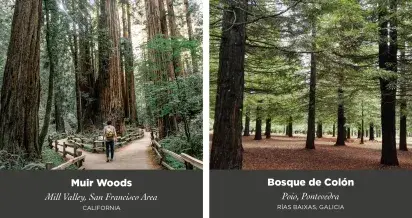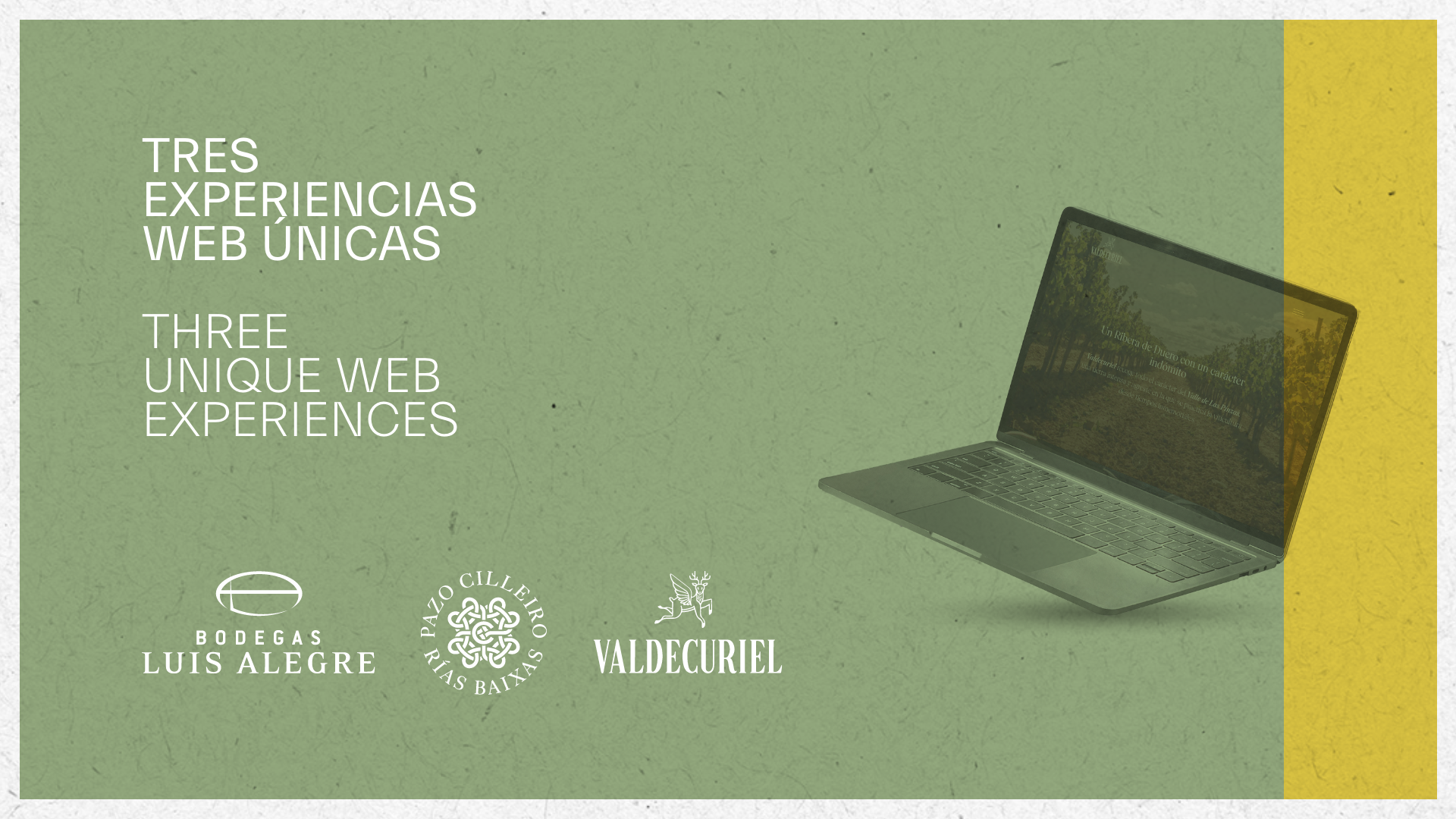Visit a singular forestacross the estuary from Pazo Cilleiro
Looking southfrom the Pazo Cilleiro winery lies Mount Castrove. Wooded slopes lead up to the summit, eroded over millennia, where wild horses graze. The contrasts in coastal Galicia are striking. The low-lying, light-filled coastline with its densely populated estuaries coexists with thickly forested areas, rugged mountains and nature in its primeval state. All of this within a few kilometres of each other.
On the other side of Mount Castrove, across the Pontevedra estuary, the southern side of the mountain is home to a singular site: the Poio sequoia forest. It was planted in 1992 to mark the 500th anniversary of Christopher Columbus' arrival in America. In fact, the official name of this forest is Bosque de Colón (Columbus Forest). It consists of 500 specimens of the Sequoia sempervirens species which were a gift from the US government.
Also known as coast redwood or California redwood, this tree is native to the west coast of the United States, where it grows both in the highlands inland and in the foothills along the Pacific Ocean.They are renowned for their height, the tallest of any tree species on Earth. Sequoias are also remarkable for their exceptional longevity: some have been found to be well over 3,000 years old! Accordingly, the Poio redwoods are still babies, although their size and height are already impressive.
Lined up neatly along the estuary's waterfront, the Bosque de Colón reminds us of another interesting fact: the good harmony of sequoias and vineyards. Perhaps it is becauseinside their thick reddish trunks they guard the memory of their native surroundings, near the Sonoma, Napa, Petaluma, Carneros, Mendocino or Russian River vineyard valleys. Indeed, the climates of coastal areas north of San Francisco Bay and Rías Baixas are similar, although our Albariño vineyards get more rain. Our redwoods thus live in a slightly wetter setting but enjoy similar good company: the culture of vines and wine.

También te puede interesar:




